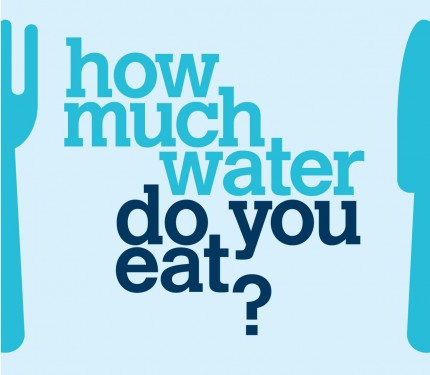
Have you ever thought about the amount of water you consume in a day? Not just the water you drink, or use at home. Even the food we eat has a water footprint, it’s called virtual water and often represents more than half of our daily water consumption.
During Broken Nature at La Triennale di Milano, there will be a Wonderwater Café with a menu translated entirely in terms of water footprint for each dish!
Cristina: Many of us are good at not wasting water at home, but we rarely know how much we consume indirectly. For example, the water needed to produce our food.
Wonderwater Cafè is a traveling project that reaches the Triennale restaurant in Milan for the duration of the Broken Nature exhibition. It stems from a collaboration between scientists and designers and is translated in a menu which illustrates the water footprint of each dish.
Jane Withers: We have no idea about the quantities of water that go into making food. So we wanted to point out the differences between beans grown in Kenya, where they may be draining water resources from local communities, and seasonal, rainfed greens that are locally sourced. We saw the effects, during the drought in California two years ago, when almond prices shot up, it was proof of these invisible water systems.
Cristina: Do you find that scientific facts have to be adapted to reach a large audience?
Jane Withers: I think so, yes. I mean, they’re doing the hard work, the heavy lifting, but we’re trying to put facts in a language that people can understand. I think that a menu that represents the water footprint when you’re choosing what to eat that makes a difference. Maybe looking through it and assessing whether we want a pizza with tomatoes that is equivalent to 290 litres or one with the chili sausage at 960 litres has an impact on our choices. They’re staggering numbers.
Cristina: The first WonderWater café dates back to 2011. In just a few years, awareness of the problem has grown alongside the project.
Jane Withers: At King’s College in London, our academic partners worked to understand where each ingredient comes from, is sourced and so on. So there’s more transparency, but I think the really interesting thing also is that then, it seemed really abstract but now there’s a sense of urgency about it. We’re probably all becoming aware that the single most important thing we can do is to shift from a meat to a vegetarian diet or a flexitarian diet. And the differences are between over 5,000 litres per day for a meat diet to 2,600. They’re palpable. I think there’s a lot more interest and awareness.
Cristina: The information is there, people are more and more willing to be informed about their choices and what impact they have. So if you’re a restaurateur, if you bring food to the world in any way, share this knowledge because it’s very important. Occhio al futuro
On air May 4, 2019


